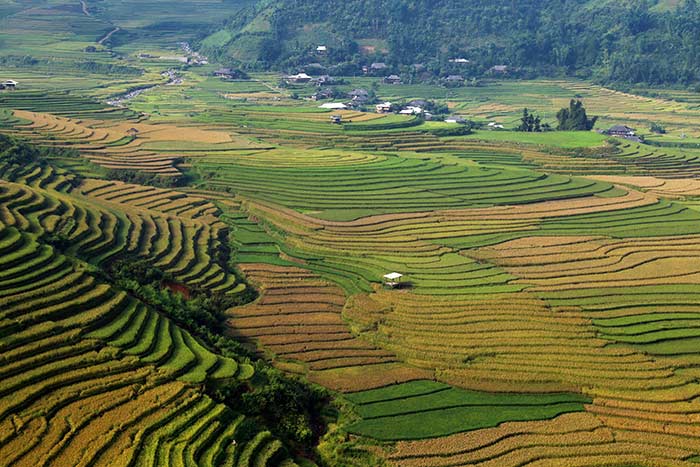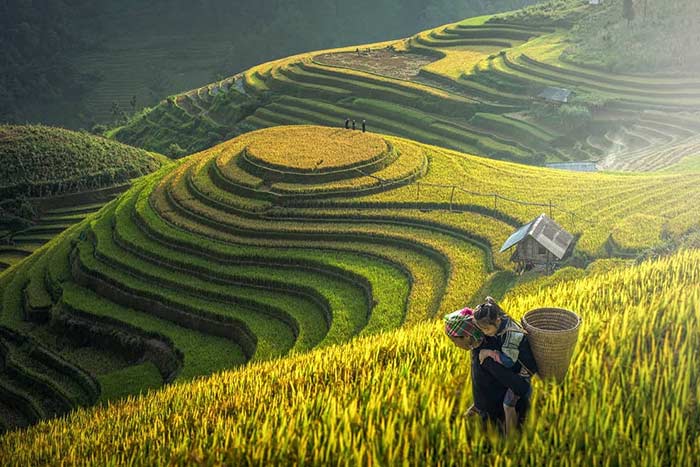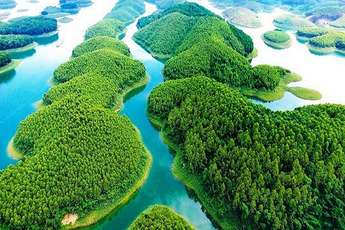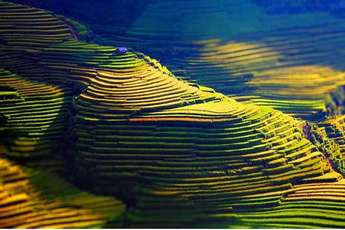
Rice terraces of Mu Cang Chai, a masterpiece of the Hmong
- on Apr 25, 2020 By: BN
Mu Cang Chai and its surroundings
Mountainous district located in Yen Bai province, at the foot of the Hoang Lien Son mountain range, more than 300 km north of Hanoi, the Vietnamese capital, Mu Cang Chai is one of the most spectacular destinations in Vietnam. This destination is renowned among travellers for its fantastic rice terraces, some of the most beautiful in the country, and for its ethnic minority villages that populate this dazzling region of beauty. It’s an unforgettable trip to the heart of a region prized for nature lovers and captivating encounters.
Rice terraces of Mu Cang Chai, national natural heritage
Mu Cang Chai's terraced rice fields tumbling down into mountain waterfalls are a masterpiece shaped by the hand of man, a titanic work that fascinates travellers. Mu Cang Chai's rice terraces are an integral part of local culture, especially that of the majority Hmong ethnic group in this remote region. The rice terraces of Mu Cang Chai are recognised as the national natural heritage and each year the rice fields festival is held during which several cultural activities are held around rice and local customs: dances, songs and traditional music, goat fights, ethnic markets etc.

Mu Cang Chai’s fabulous rice terraces are one of the most extraordinary landscaped sites in Southeast Asia. They are visible from the road, rightly called "the photographers' road", the famous national road 32 which connects the Tu Le village and Mu Cang Chai via the Khau Pha pass, one of the four largest Vietnam passes. The ascent of the pass from Tu Le offers breath-taking panoramas over large expanses of rice terraces. From this pass, paragliders soar to admire this unique spectacle.

In Mu Cang Chai district, you can leave the main road to go to La Pan Tan, Che Cu Nha and Ze Xu Phinh communities which are home to more than 500 hectares of rice terraces that compete in beauty. Hiking is a great option to discover it’s incredible mountains carved from terraced rice fields.
An ingenious agrarian system
The rice terraces, a true trademark of the landscape of Mu Cang Chai, are a great system of irrigation and water management that are fiercely rooted in the depths of the Hmong culture. The water in the terraces comes from the upper streams and waterfalls. When there are low points in the mountain, it is important to overcome this problem by moving the water from the highest places. The bamboo is then cut in half and used as a means of transferring water by natural gravity to the terraces. According to the experience of the Hmong people in this matter, the water is routed to the first terrace and then an east opening to irrigate the lower terrace. This process avoids flooding the fields and preserves the fertility of the soil. This type of agriculture has allowed the Hmong to increase the cultivable area on steep and rugged mountainous terrain and better conserve water.
Meet the Hmong ethnic group

The population of Mu Cang Chai district is mainly Hmong, almost 90%, and some Thai and Vietnamese. The Hmong live in wooden houses on the mountainside, on which they ingeniously practice flooded rice cultivation. You will recognize Hmong women by their traditional costume which they wear with pride every day. Hmong women love to wear large silver earrings, necklaces and bracelets.
To learn more about the Hmong culture complex, we invite you to stay with them. Some Hmong families welcome overnight travellers to Mu Cang Chai. It is an excellent opportunity to immerse yourself in the local culture and to promote more united tourism.
Best season to travel to Mu Cang Chai
To fully enjoy the spectacular landscapes of Mu Cang Chai, it is important to choose your season well.
The best season is certainly from mid-September to early October when the rice is ripe and the harvest begins. The rice fields are then covered with really striking yellow gold colour.
In May, when the rice fields are flooded just before transplanting, the rice fields turn into huge mirrors where the sky is reflected. In June, July and August, the rice ripens, the rice fields are tender green but it is hot and thunderstorms are frequent.
The rest of the year, the rice fields are dry and it can get very cold in late December and January.
Related articles:
>> Mu Cang Chai, one of the most beautiful circuits in the Northwest
>> Rice terraces in Vietnam, the most beautiful mountain scenery
>> Hoang Su Phi rice terraces, the natural heritage of Ha Giang
Comment
Other Blog
Categories
Latest News
on 27 Apr, 2023      
on 15 Apr, 2023      
on 28 Mar, 2023      
 Español
Español Français
Français















F
on Jan 3, 2024Igor Mozetic
on Apr 8, 2023Ira Beale
on Feb 10, 2023Phạm Phú Toàn
on Jan 28, 2023Max Stover
on Jan 11, 2023